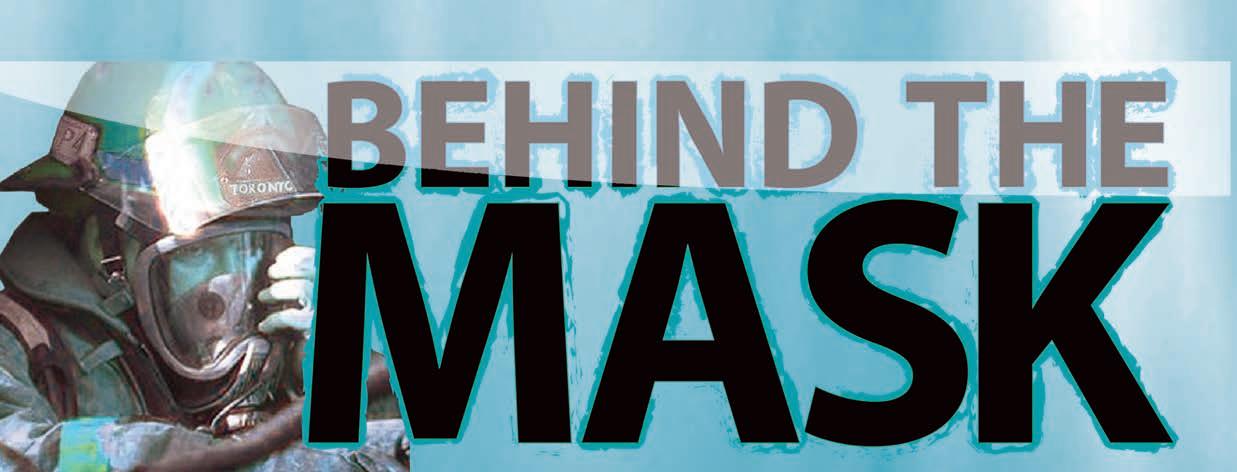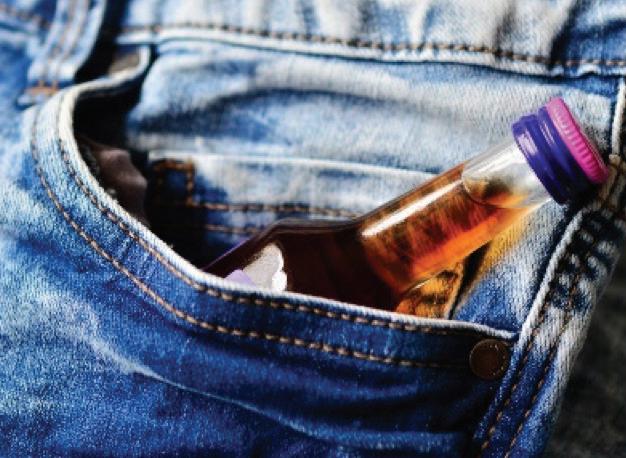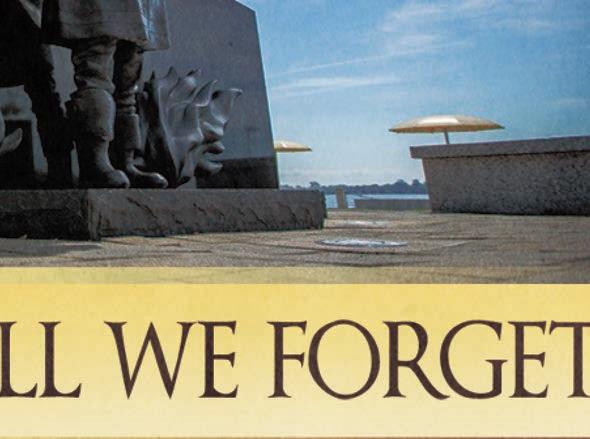
8 minute read
Behind the Mask – The Journey Back
Letter from the Editor…
The molecular representation of ethanol, the type of alcohol found in beer, wine and liquor, is pretty simple. It is made up of hydrogen, carbon, and hydrogen atoms, and can also be represented as CH3CH2OH or C2H6O. While this chemical formula seems fairly simple, having an excess amount of alcohol in one’s system, essentially consuming it faster than the body is able to break it down, follows with it, long-term effects and can even be fatal. The same can be said for the outcome of living with untreated and with prolonged substance use (drugs). The longer it is left untreated, the more detrimental it becomes. I recall when I fi rst started my career with TFS almost 30 years ago, and my work with the Peer Support Team that followed, I would hear stories that brushed situations ‘under the carpet’, led fi refi ghters to ‘suck it up’, and created a culture that hid the infractions encountered by fi refi ghters with relation to their mental health. Today, while the stigma still exists, it has lessened, as we live in a society that is much more open to talking about mental health and destigmatizing it. No longer do fi refi ghters feel they have to suffer, or suffer alone – there is help within our organization for staff to get through these most diffi cult times. Further, there are a plethora of professionals and programs; people who care, both internal and external, so that it is no longer an ‘us against them’ scenario. It’s a “We’re in this together, how can I/we assist?” environment.
Lynn Sciberras
The founding members of the group, originally known as the EAP Team of the 1970s, had nowhere to turn back then and they found themselves struggling along until they created the group now known as the Peer Support Team of 2020 – peers helping peers. Gone are the days where members had to feel they were alone and had to hide their illness. Today, steps are available to confront and, ultimately manage their illness in a healthy manner with the support of other members, family AND the job. As we continue with this “Old School” edition of FireWatch, here’s a story in “The Mask”, of one man’s journey from then to now and how his life has changed for the better.




The Journey Back...


If I could choose a moment that captures not only the hope, but the progress made in reducing mental illness stigma, it would be October 19, 2019. I was sitting in a classroom, discussing “Persons in Crisis”. It was Module 3 of our TFS R2MR program. It still felt surreal to me, as I realized it wasn’t too long before, that I felt helpless and alone, grappling with challenges mentioned during the discussion. Challenges I didn’t see coming. The difference? In that classroom, I could be part of the solution. I had a chance to relate, educate and dispel myths that come with mental illness. This program was long overdue. We needed it then. We have it now.
My list of issues was beyond lengthy. I’ve chipped away at it but, like everyone else, we continue to work on it. However, that’s not my point today. In writing this, I want to refl ect on how things were back when I fi nally made the choice to address what was a major life crisis. I need to touch on how this all began and what triggered something in me, which at the time, was a slow build and I didn’t see any of it coming. The moment was in June 1992, at a fi re where a captain had just lost his life. This call changed fi refi ghting in Ontario and it changed my life as well. I didn’t know how to grieve, nor did others on the job, including my colleagues. Lost in the moment, our shared reaction was to visit a local bar and drink our pain away. I would place my feelings on the shelf and eventually that shelf collapsed. This went on after the funeral, so healing was slow. I looked around and saw people coping in different ways to feel connected and to mask the pain. I was doing the same thing, but justifi ed it by looking at someone else who seemed worse off than I was. “I’m not as bad as him”, so I thought, and life went on.


Fast forward to another event. It was an incident in the former North York, where a woman was murdered, and I was fi rst on the murder scene. The fi rst legal trial, two years after the incident, took a mental toll on me. So did the nine months following the trial. Each time, I relived my actions when I was challenged by accusatory lawyers, again and again. By March 2012, I couldn’t function. “Fake it till you make it”. That didn’t seem to work. At the time, I was too proud to reach out for support. The Association’s and city’s EAP were a mere call away, but I was too embarrassed, too proud, and I was afraid of the system. I also wasn’t 100% convinced I had a problem – I was confused. My solution? Doing things my way through alcohol and drug consumption. But I knew, this time, that I shouldn’t trust myself. So, I chose LTD, because I lost the confi dence in myself to be able to perform to the best of my ability. A long, painful road followed. What I learned is that I couldn’t “will” the addiction part away, no matter how I tried and it made no sense. It just got worse. Finally, I surrendered – a big word for a fi refi ghter, but a critical one when it comes to being ready to take help. My EAP connected me with Homewood. I started my journey back. What did I learn? I needed to love myself, because we can beat ourselves up pretty good with our negative self-talk. What happened, what I saw, and even how I coped, wasn’t my fault. I didn’t know enough then. It was also still an ‘elephant in the room’. Next came therapy – a huge help to get me to pinpoint and face some issues I never dealt with. They had always been “on the shelf” until the shelf collapsed. I needed to understand how all of this happened to me, so I enrolled at McMaster University and completed their addiction program. This gave me a good understanding of addiction and how it affected my brain and me. A few years later, I kept an open mind to any tool that could assist me with my addiction, such as education, environment, experiences from others, exposure to a recovery life and a 12-step program. These were some of the tools in my recovery toolbox. In these few years, I had been struggling. The public conversation about PTSD, addiction and mental health illness was about to change – for the better. Three years later, in March of 2015, I returned to active duty in the Operations Division, as a productive and confi dent employee. The transition was tough, but I had a good support network to assist me in my return. I was, and still remain, grateful for this. I wanted to give back. On April 5th, 2015, the Ontario government passed Bill 163, the Ontario First Responders Act. The Bill developed a strategy and initiatives to prevent and mitigate the risk of PTSD among fi rst responders. I was asked to publicly share, in the media, my experience with dealing with PTSD and my return to the workplace. My “personal story of hope” is now part of our R2MR program, in the Recovery Module. Today, I have hit 32 years at TFS. Together now, we climb this mountain of mental health and wellness awareness. I am proud to say I believe TFS is moving in the right direction. We have the support of senior management, a strong peer support team, our City EAP, good benefi ts ($3,500 annually for a mental health professional) and most recently, our own half-time counsellor. In 2019, through Local 3888, we launched a 12-step support group meeting, a critical connection forum, held on the fi rst Wednesday of the month, exclusively for those who are struggling with alcohol and/ or drugs. It is 100% confi dential, which is vital to the premise of the group, which results in openness, honesty, and the sharing of where people are at with addressing their challenges. I end this by sharing the best of moments – today. It’s October 2020 and while still surreal, the momentum keeps going. I am ready and eager to help deliver our next module of our R2MR program and continue with our support group. My hope is that we keep doing better and more. Why? It’s simple. Even though it took a long time to get to where we are now, we are leaps and bounds ahead of where we were 32 years ago (or even 5 years ago). This is thanks to the various programs and the dedicated people and support groups in place. We’ve proven that progress is possible with passion and support behind it. I stand as a testament to the fact that with supports in place and an environment that is psychologically safe and open to the mental health and addiction topics, we can help fi rst responders and their families who are struggling. We do it by giving back. We owe it to them and to each other.











